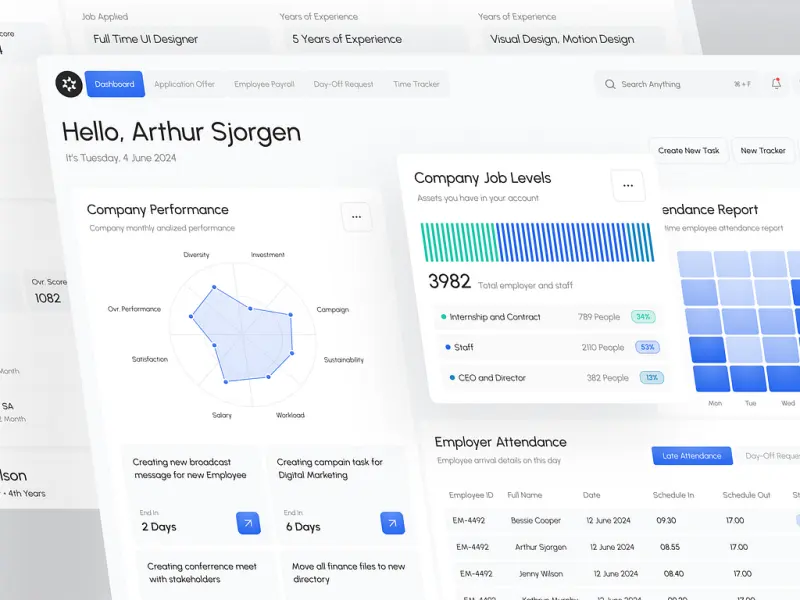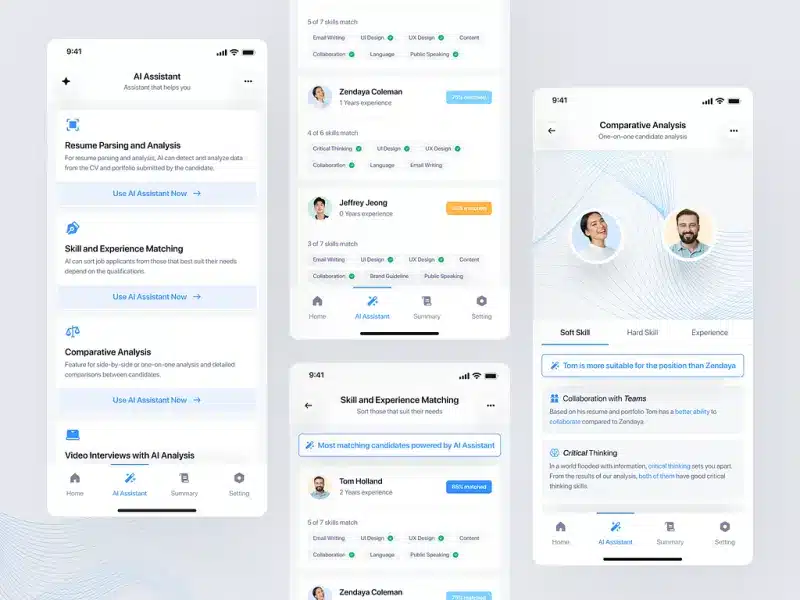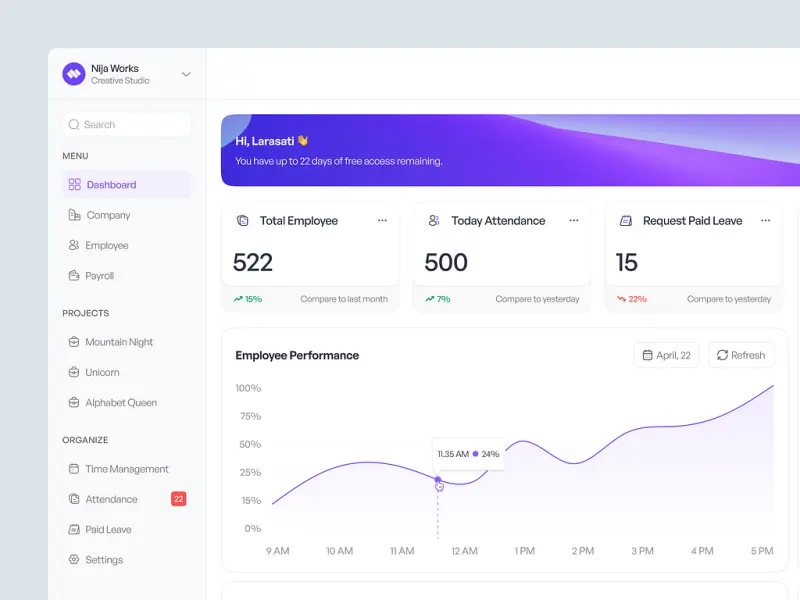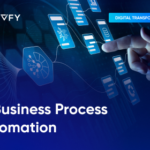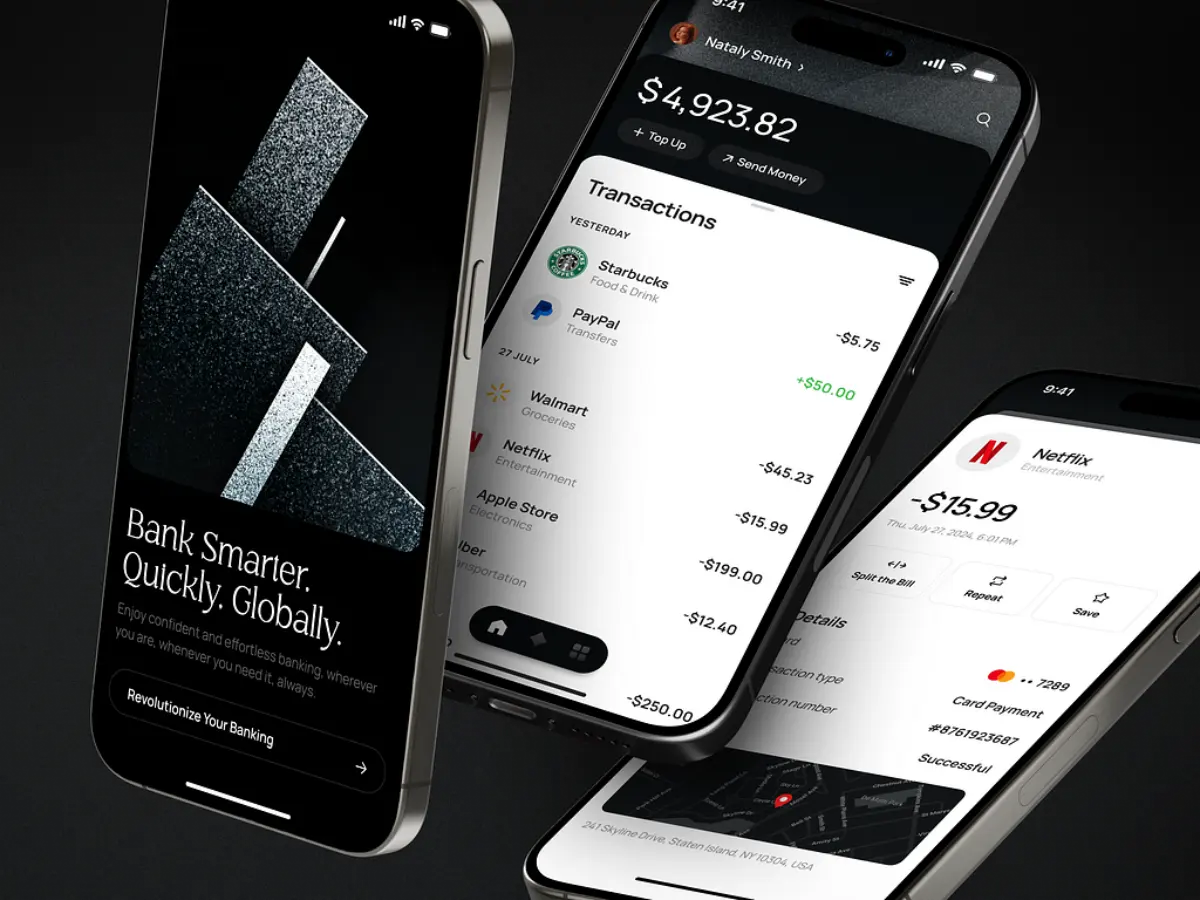Everything You Need to Know About Generative AI in HR
- TECHVIFY Team
- 0 Comments
Generative AI in HR is a trending topic as the role of HR is expected to evolve significantly in the future. A report from Microsoft shows that 70% of employees are already at ease utilizing AI to handle administrative tasks. This leads to more time for meaningful face-to-face interactions, which helps save money, increase efficiency, and meet organizational goals.
This article will cover everything about generative AI in HR, including its overall impact, the tools available for HR, and how to begin integrating generative AI into your HR department.
I. The Current State of Generative AI in HR
Generative AI (GAI) is going to change the HR function by automating certain tasks rather than replacing entire jobs. This creates an opportunity to reshape HR roles to make them more engaging. Three roles that are already being affected by AI and automation are Human Resource Business Partners (HRBPs), Learning and Development specialists, and Total Rewards Leaders.
While GAI isn’t expected to lead to job cuts, HR professionals who use it will be more valuable than those who don’t. 58% of employers plan to start using GAI in HR by June 2024. 76% believe it will increase efficiency, but it’s not just about saving money. GAI helps share knowledge and creativity, allowing for more innovation, problem-solving, and higher-quality work in HR.
Generative AI in HR example
II. The Impact of GenAI on Human Resources
GenAI is reshaping HR, turning it into a more strategic force with wide-reaching effects.
A Surge in Self-Service Adoption
Historically, HR self-service tools have received mixed reviews from employees. However, GenAI is changing the game by offering more conversational, intuitive workflows and delivering personalized information. This level of customization and ease of use is driving higher adoption rates, as employees increasingly prefer GenAI’s seamless approach to addressing their queries and needs.
Boosting Productivity and Employee Experience
Much like how businesses use deep consumer insights to craft personalized, tech-enabled customer experiences, similar trends are now emerging in the workplace. With enhanced automation and data-driven insights, GenAI is leading to faster content creation, improved visualization, and streamlined workflows. Current examples reveal that GenAI enables content creation at three times the speed, automates over 50% of tasks in onboarding processes, and doubles recruitment engagement rates through personalized messaging crafted with AI.
In key moments, employees still want to connect with people—and that’s where GenAI shines. By automating routine tasks, it frees up HR professionals to focus on meaningful, face-to-face interactions, resulting in higher employee satisfaction.
Fully Personalized, “Always On” HR Service Delivery
GenAI is ushering in an era where HR services are truly personalized and available around the clock. With HR “copilots” powered by AI, both employees and managers receive real-time guidance to navigate their careers. This technology allows HR to better understand employees—their work rhythms, development needs, when they might need a break, and when timely reminders for goals or strategic programs are beneficial. For managers, GenAI enables them to customize onboarding plans, motivate top performers, and even get alerts when a disengaged team member needs re-engagement.
Building a Comprehensive, Data-Driven Talent Ecosystem
Many organizations have already invested in understanding employee skills to drive upskilling and career development. The challenge now lies in using this skills data to inform talent decisions across the business rather than in isolated areas.
GenAI’s ability to integrate less structured data sources will lead to more interconnected use cases, such as talent assessments, career pathway development, talent sourcing, and learning and development. As a result, companies will be able to build a talent ecosystem rooted in skills tightly linked to their broader workforce strategy.
III. How to Start Using Generative AI in HR
These are some key practices to get acquainted with before implementing generative AI in your HR processes:
Step 1: Start Small and Experiment
One of the best ways to begin implementing generative AI in HR is to start small and experiment with free tools like ChatGPT. This gives you a chance to experience the possibilities of AI without making a big financial commitment.
For example:
- Use ChatGPT to brainstorm employee survey questions or interview questions.
- Try drafting emails to candidates or updating an existing job description.
This approach lets you test the waters of generative AI and get comfortable with how it works. It’s a low-risk way to explore the technology and understand its capabilities before moving on to larger, more complex use cases.
Applying Generative AI in HR
Step 2: Learn How to Prompt Effectively
To make the most of generative AI, learning how to create effective prompts is important. A well-crafted prompt ensures that the AI understands exactly what you’re looking for, leading to more accurate and useful outputs. There are three key elements to consider when crafting prompts:
- Objective: What’s the purpose of your query? The objective clarifies what you want to achieve with your prompt and helps focus the AI’s response on the right information.
- Context: Provide any relevant background information to help guide the AI’s response. This could include specifying the topic or offering details that are necessary for the AI to generate a well-informed answer.
- Format: If you require the output in a particular format (like a list, summary, or essay), make sure to include that in the prompt.
For example, a good prompt might be:
“Draft a job description for the role of HR Administrator at Mastercard, covering responsibilities and what we offer.”
You can experiment with different prompts for the same task to see what gives you the best results. The more you practice, the better you’ll get at generating effective prompts.
Step 3: Evaluate and Refine Based on the AI Outputs
It’s essential to remember that generative AI is constantly evolving, and its outputs might need refinement. After receiving AI-generated responses, take time to evaluate them. Ask yourself:
- Are the responses accurate and relevant?
- Do they meet your needs?
- Can the prompt be improved to get better results?
Refining your prompts can help you obtain more accurate, useful information in the future. Keep in mind that while AI can assist in generating content, it’s important to rely on your knowledge, experience, and industry norms to evaluate the accuracy of the results. AI is a tool to assist you, not a replacement for human judgment.
Step 4: Integrate AI Gradually
Rather than jumping in headfirst, it’s wise to integrate generative AI into your HR operations gradually. This method helps your team adjust progressively to the technology over time without feeling overwhelmed.
For example:
- Start by using AI to draft simple policy documents or employee communications.
- A week later, try applying AI to a basic data analysis task, such as evaluating employee engagement survey results.
By introducing AI step-by-step, you can ensure the learning curve is manageable for your team. Gradual integration also allows you to identify and address any potential challenges early on. Over time, as your team becomes more confident with AI, you can begin to expand its use into more complex areas of HR, such as talent management, recruitment, and performance evaluation.
Step 5: Always Keep Data Privacy in Mind
Data privacy is a major concern when using generative AI in HR, where sensitive employee information is often involved. HR professionals must protect personal data and ensure compliance with data protection regulations (such as GDPR or CCPA).
Here are some best practices to follow:
- Make sure the AI tool you’re using complies with relevant data privacy laws.
- Limit the amount of personal and sensitive data shared with AI tools.
- Ensure that any AI-generated content is stored securely and only accessed by authorized personnel.
As generative AI becomes more widely used within your HR department and across the organization, developing a generative AI policy is a good idea. This policy should outline best practices for using AI in HR, with a focus on maintaining confidentiality and protecting employee data at all times.
Step 6: Collaborate with IT
The final step in successfully implementing generative AI in HR is to collaborate closely with your IT team. Working with IT ensures that you fully understand the technical aspects of the AI tools you’re using and how they integrate with your existing HR systems.
Key areas to focus on with IT include:
- Ensuring the AI tools are properly integrated with your HR software and systems.
- Minimizing any potential technical issues that could disrupt workflows.
- Understanding the security measures in place to protect sensitive employee data.
By collaborating with IT, you can ensure a smooth and successful rollout of generative AI in HR department. IT teams can also provide valuable guidance on how to scale the use of AI across the organization, ensuring it aligns with broader business goals and infrastructure.
Have a Project Idea in Mind?
Get in touch with experts for a free consultation. We’ll help you decide on next steps, explain how the development process is organized, and provide you with a free project estimate.
IV. Applications of Generative AI in HR
Recruitment and Hiring
Generative AI tools, like ChatGPT, are making a big splash in recruitment by helping HR teams craft spot-on, engaging job postings and create customizable screening questions that fit specific roles and candidate profiles. This allows for a more focused interview process and ensures you’re targeting the right talent.
But that’s not all. HR professionals are also putting generative AI to work in drafting various recruitment-related emails—from outreach messages to rejection letters—all with a consistent tone and a personal touch. What’s more, some talent intelligence platforms now come with AI-driven search capabilities, allowing you to query their databases using plain language instead of complex Boolean strings. This means you can easily compare candidate profiles against job descriptions and make more informed hiring decisions.
Application of Generative AI in HR
Onboarding with AI
When it comes to onboarding, AI-powered chatbots can act as virtual assistants, offering real-time support to new hires. Whether it’s answering questions about company policies, explaining benefits, or helping navigate leave requests, these chatbots ensure new employees get the answers they need right away. This kind of support not only enhances the onboarding experience but also helps new hires settle in much faster.
Training and Development
Generative AI is opening up new possibilities for employee growth and development. By analyzing individual skills, performance data, and career aspirations, AI can suggest personalized learning paths, ensuring employees always develop in ways that align with their personal goals and the company’s needs.
AI-based coaching is also gaining popularity. It provides real-time feedback and insights that mirror the benefits of traditional one-on-one coaching. Generative AI keeps training materials up-to-date, ensuring your content always reflects the latest industry standards. AI even powers dynamic training simulations, offering employees hands-on learning experiences that adapt to their decisions, sharpening their decision-making skills in the process.
Boosting Employee Engagement
Generative AI can help HR teams design better employee engagement surveys, giving you the tools to gather actionable insights on workplace satisfaction, productivity, and areas that need improvement. With these insights, you can make informed decisions on how to boost morale and engagement.
And let’s not forget those AI-powered chatbots. They’re not just for new hires—they can engage your entire workforce, handling everyday queries about company policies, benefits, and more. By automating these routine tasks, HR professionals can spend more time on high-value, face-to-face interactions that truly matter.
Policy and Document Generation
When it comes to drafting and updating policies or key documents, generative AI is a game-changer. It speeds up the document creation process, providing templates for contracts, agreements, and other important paperwork. This means HR teams can focus less on tedious admin tasks and more on strategic initiatives. Plus, AI can help auto-complete forms, saving even more time and reducing the risk of errors.
HR Data Analysis
Generative AI excels at analyzing large datasets and uncovering patterns in easy-to-understand ways. It can produce visually appealing data insights, helping HR professionals quickly spot trends and make data-driven decisions.
For example, you can use generative AI to analyze salary data for trends or anomalies or even look into patterns in employee attendance or performance. These insights can help you address issues like dissatisfaction or management inefficiencies before they become bigger problems. You can even use AI to generate scripts for more advanced data analysis, making it easier to dive deep into HR metrics.
Internal Communications
Generative AI can take your internal communications to the next level by helping you create messages that are aligned with your company’s voice and values. It can personalize communications, ensuring that messages resonate with the recipient, whether they’re a new hire or a seasoned employee.
AI can also adapt messages based on role, location, interests, and even the employee’s stage of professional development. Whether you’re communicating with candidates or your current team, generative AI ensures that every message is intentional, inclusive, and engaging.
Speeding Up Routine Tasks
When used correctly, generative AI can help HR teams complete tasks faster, freeing up time that can be spent on more strategic initiatives. By automating repetitive tasks, HR professionals can focus on activities like talent management, employee development, and organizational planning—where they can make a difference. This doesn’t just make HR teams more efficient; it also makes them more valuable contributors to the company’s overall growth.
Conclusion
Generative AI is transforming HR by automating repetitive tasks, improving efficiency, and enabling HR teams to focus on more meaningful work. From recruitment to employee engagement, AI is reshaping HR operations, making it crucial for teams to start adopting these tools.
If you’re ready to improve your HR processes with AI, contact TECHVIFY for a free consultation and expert AI development services. Let us help you integrate AI into your HR department effectively and securely.
TECHVIFY – Global AI & Software Solutions Company
For MVPs and Market Leaders: TECHVIFY prioritizes results, not just deliverables. Reduce time to market & see ROI early with high-performing Teams & Software Solutions.
- Email: [email protected]
- Phone: (+84)24.77762.666




